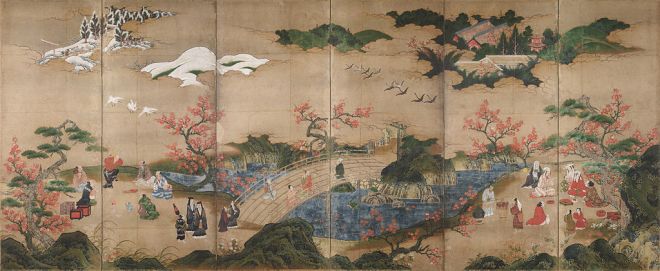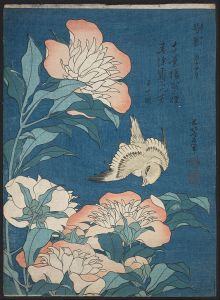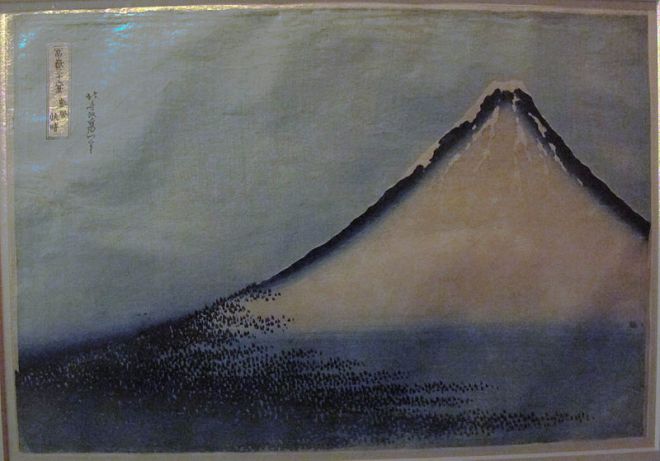
“A monk once asked Joshu, ‘What is the meaning of the Patriarch’s coming from the West?’ Joshu answered: ‘The oak tree in the front garden’. (Zenkei Shibayama, The Gateless Barrier Zen – Comments on the Mumonkan, 259-260)
“That it is” and “what it is”, the actual and the rational
This is one of these irritating koans which cause most Westerners to think: Enough of this trying to be smart … what about speaking clearly in terms that everyone can understand! The commentator in the Gateless Barrier explains that you need a bit a background to even begin to understand. The Patriarch referred to here is Bodhidharma, who came to China from South India in the 5th or 6th century, and is said to have laid the foundations for Zen, thereby becoming the First Patriarch of the Chinese Zen lineage. To be sure, many scholars believe this is a legend, but this does not matter here. As Zen developed in China, the phrase “What is the meaning of the Patriarch’s coming from the West” has been used to mean “What is the Truth of Zen?” So what is the Truth of Zen? “The oak tree in the front garden,” said Joshu. What the oak tree in the front garden stands for is the actual concrete existence of reality, “that it is,” rather than the “what it is” we get from language, which only represents reality as interpreted by the mind. The teacher could have said “the bird singing on the branch” or “the snow falling on the roof.” Any occurrence taking place right now, without any meaning, or justification, or goal, would do. Nishitani Keiji developed this key idea as follows: “From the standpoint of reason, we attempt to pursue the “fact that something is” (its actual being) through the medium of “what it is” (its essential being). This standpoint does not enter directly and immediately to the point at which something is. It does not put one directly in touch with the home-ground of a thing, with the thing itself (Religion and Nothingness, 115). Heidegger would have said: “it worlds” – “es weltet” –. But even this is already philosophical. “The oak tree in the front garden” is simple and punchy. Yet it is so difficult to really take in.
There were no koans in Indian Buddhism. The Chinese mind invented koans to point to concretely experienced reality when and where it had come to be hidden by words or representations. The koan starts with a question put at the level of cognition, “what is the meaning of …?” The reply is designed to stop the inquirer in their tracks, as it is formulated in a different type of language, that of observation, rather than that of discursive thought. There is a temptation to take the answer as poetry, and look for a symbolic meaning. That would be looking for an epistemological “what.” The absence of the verb “to be” should trigger a flash of intuition causing the monk to break through the cognitive mode, and see that the real is the actual, concretely experienced present, things as they are, with no meaning, or purpose. The oak tree in the front garden.

Magritte used art to produce a similar effect in his painting “Ceci n’est pas une pipe.” This is not a pipe, it is the representation of a pipe. Note that Magritte still uses the verb “to be,” a loaded word in Western philosophy, while Joshu only juxtaposes the oak tree and the front garden. Remember when you told your toddler, pointing to images on a book, “this is a cow,” or “this is a horse” … Well, you were lying, weren’t you? Worry not, though. Learning the names of things is one step on the way. No one can get from what has been called unenlightened non-duality – the early undifferentiated consciousness of the baby – in one single leap to enlightened non-duality – the awakened mind. As a child and young adult, one does need to learn duality, and at first it will be non-enlightened duality – basically everything one learns at school – and later it may become enlightened duality – if one reads philosophy or follows a spiritual practice. Though insights into non-duality may take place at any time, it takes practice to actually accept non-duality as the standpoint of everyday life, especially since, as Nishida said, “Pure experience includes thinking.” (Nishida Kitaro, An Inquiry into the Good, 17) That is, non-duality includes duality.
Nishida was a follower of Rinzai Zen, a school known for its systematic use of koans to lead its practitioners to awakening. Michiko Yusa tells us that Nishida worked on the koan “Joshu and the Dog” from his very first sesshin. It goes like this: “Someone asked Master Joshu whether the dog has a Buddha nature. To this, Joshu replied, “Mu” (it has not). On another occasion, to the same question Joshu answered, “U” (it has).” Yusa explains: “The discursive question of whether the dog has a Buddha nature presupposes a dichotomy between subject and object; thus, it does not touch the vitally living reality, whether it is a dog’s or a person’s. Actual vibrant reality is before “it has” and “it has not.” (Michiko Yusa, Zen and Philosophy – An Intellectual Biography of Nishida Kitaro, 69)
“A rational foundation for Zen.”

Nishida was told that he had “passed” his koan, but he felt disappointed. He obviously expected “awakening” to be something a bit more dramatic! For some, realising that one has confused the representation of reality with its actuality is quite a revelation. But for Nishida, it seems that the “problem” was elsewhere. As he saw Japan swamped by a tidal wave of Western concepts, abstract theories and ideologies, he was worried that the sort of intuitive breakthrough from the representation to actuality used in koans would no longer “work.” He is said to have “stated in his lectures that his aim was to establish “a rational foundation for Zen.’” (Robert E Carter, The Kyoto School, 14). He had this early conviction that objective thinking, no more than any other activity, was not the opposite of concrete experience, but was included in it. All humans use representations to get on with practical living, the Chinese and the Japanese, just as much as the Westerners … Anthropologists who have studied the cultures of foraging populations who cannot write, and know nothing of reason or objective thought, still have names to represent the things which matter to them. Using words is using abstract concepts, it is already living at a remove from the concrete. Names bring about “things,” arising from the indifferentiated “sensory muchness” of pure experience, as forms out of the formless nothingness. And Nishida wanted “to capture [the] standpoint from which everything emerges and to which it returns” (Nishida, “My Philosophical Path,” quoted by Yusa, Zen & Philosophy, 301) and articulate it in the philosophical terminology of the West.
“Pure experience” and “no-mind” – the true reality of the universe beyond objective logic
Having first looked for inspiration in the works of William James and Henri Bergson, who both had criticized discursive thought, and attempted a return to pure or direct experience, using intuition to grasp reality, Nishida had to leave them behind because neither had had access to the Zen practice of no-mind, whereby the self dis-identifies from thoughts, and realises itself as nothingness. As a result, James and Bergson could not go beyond the psychological approach which posited an individual endowed with consciousness looking at a world outside. Their views remained shaped by “object logic” – the view from outside.
Nishida stated early on that he wanted to inquire into “the true reality of the universe,” (Yusa, Ibid, 23) but he wanted to carry out “a philosophical inquiry in a wholly different manner, that is, from the vantage point of the “real self.” (Yusa, Ibid, 66) By real self, he meant the no-self of Zen. Unlike a Zen master in charge of novices in a monastic community, Nishida was not trying to bring monks to awakening. What he had set up himself to do was to inquire into the nature of the world as experienced from the standpoint of awakening. He used the language of Western philosophy rather than that of early Indian Buddhist philosophers, because it was necessary for him to express his thought in the language which the Japanese were increasingly using in their everyday lives as they modernized the country.
Using the conceptual abstract language of Western philosophy to describe the concretely experienced reality which awakening is meant to usher you into, is of course an apparently absurd thing to undertake. Buddhism has had a long history of rejecting all things intellectual, and Zen has been especially rigorous in its anti-intellectual stance. Zen relies on a blend of working on koans, meant to give the practitionners flashes of insight into concrete reality, and week-long silent retreats including hours of sitting every day, meant to allow that insight to “sink in” and become as it were embedded in your way of life. What allowed Nishida to feel justified in attempting his philosophical inquiry is the insight that “pure experience includes thinking.” What had to be done is to describe the process through which thoughts arose from concrete experience, and to show that the problem is not with concepts per se. We could not live without concepts. What we must do, though, is look into the way they arise, and make sure we use them in the right way. The mainstream worldview holding sway wherever you happen to be in the world is the product of minds which operated from an ego-centred standpoint and whose interpretation of reality is distorted by attachments – greed, fear and ignorance. So the first move is to show that only the ego-less no-mind can see things as they are. The move from ego-centredness to no-mind is what, in his last writings, Nishida calls “a turning of the self,” and it is this, very precisely this, that Nishida takes to be the embrace of a religious worldview. Becoming religious, therefore, is not adopting a particular “sacred text” as a revelation of the truth received by some prophet of the past, purported to be a record of the way things are, once and for all. On the contrary, becoming religious is to reject all texts, “kill the Buddha,” and embark on the task of emptying one’s self so that one is a transparent vehicle for an undistorted self-expression of the world. In addition, becoming religious is to gain the ability to see the world through what Robert Carter calls the “double-aperture,” seeing at once the conceptual interpretation, and the fact that this interpretation is only a temporary take on things, at a particular moment, in a particular context: in other words, it is conditioned, and one should be ready to let it go if it proves to become incorrect due to changes taking place. This is also what Carter calls “seeing things lined with nothingness.”

